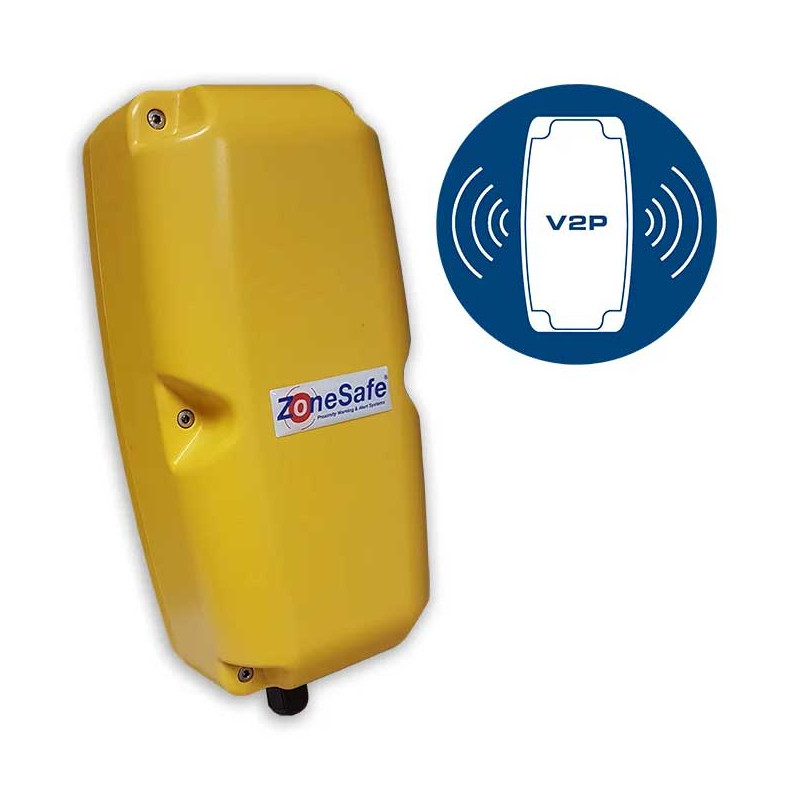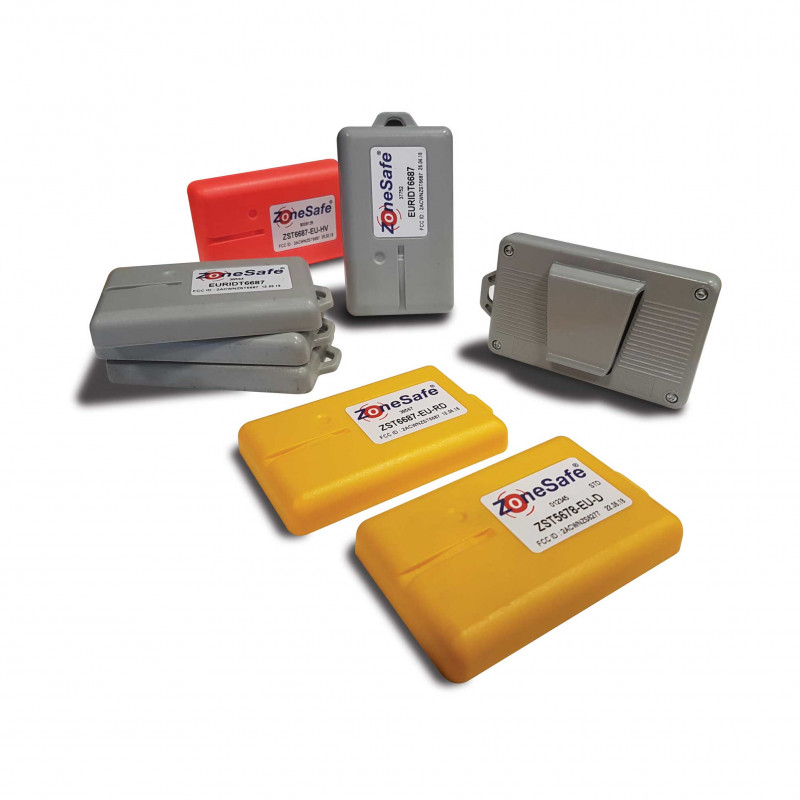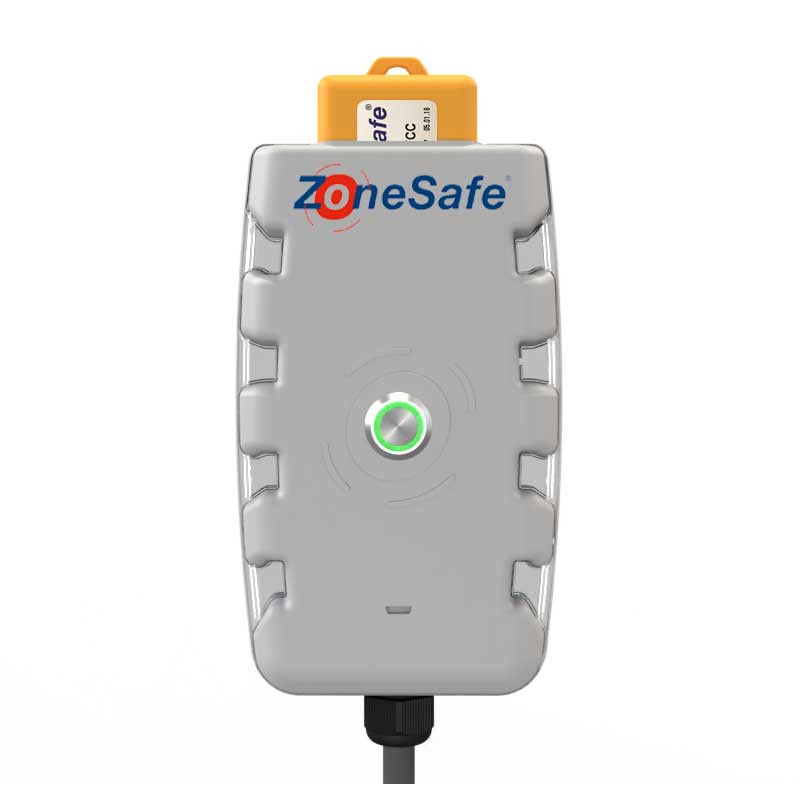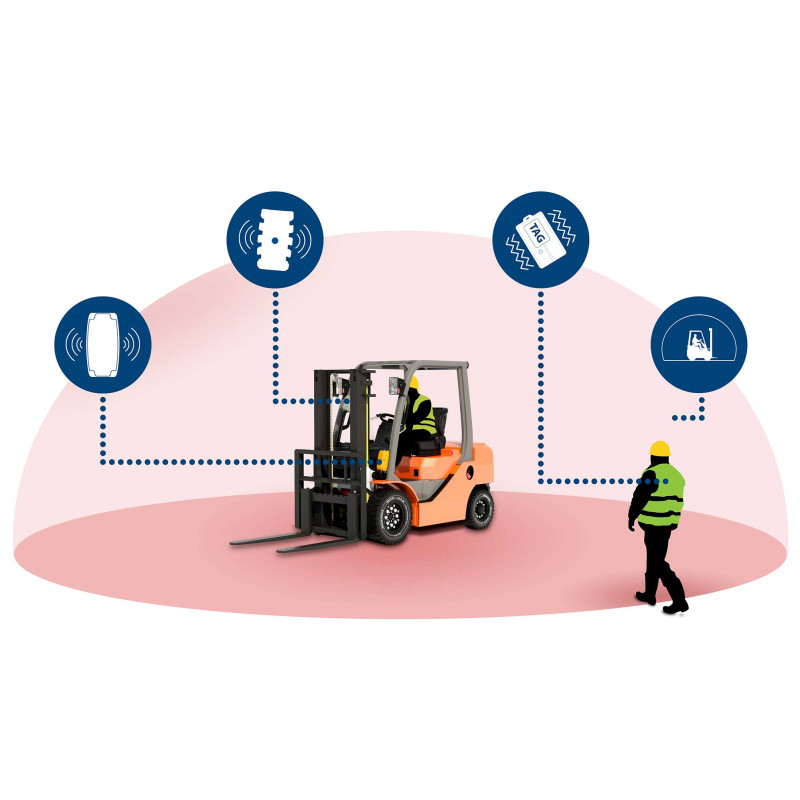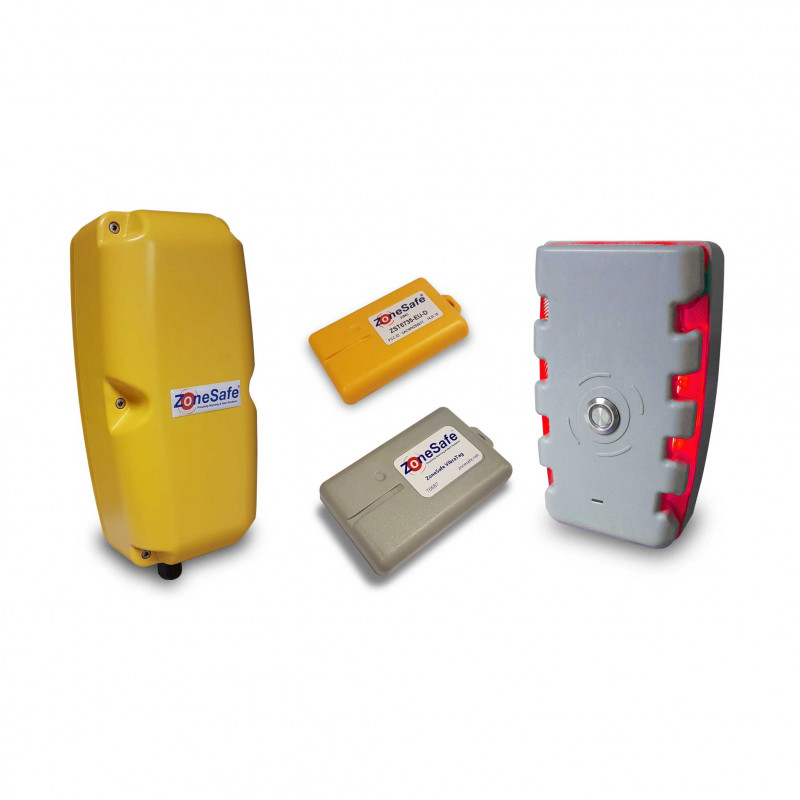ZoneSafe V2P Proximity Warning System (Vehicle-to-Pedestrian)
Manufactured by Avonwood Developments Ltd
Product Buying Options
Additional Sales Information: Contact us directly for a UK site assessment and bespoke quotation. ZoneSafe systems are supplied directly to UK customers and via our global network of authorised distributors and installers.
Product Description
The V2P system proactively manages risk by focusing on immediate, mutual awareness through a single, adjustable detection zone around the vehicle. This immediate, non-line-of-sight warning empowers both the operator and the pedestrian to take corrective action, preventing a collision before it can occur.
The core components are:
- V2P Sensor (Antenna): Fitted to the vehicle, this unit creates a 360∘ detection zone with an adjustable range up to 10 metres. It detects personnel tags through obstructions like blind corners and walls.
- Proximity Tags: These active RFID tags are worn by personnel. When detected, the tag provides haptic (vibrating) feedback to the wearer, offering a crucial two-way alert.
- Control Unit: Positioned inside the vehicle cab, this unit alerts the driver with audible and visual alarms (flashing lights). It processes and logs all warning signals and activity.
Proactive Risk Mitigation
The V2P system proactively manages risk by focusing on immediate, mutual awareness through a single, adjustable detection zone around the vehicle.
- Customisable Safety Zone: The system allows you to define a single, consistent safety range (up to 10 metres) where the alerts will activate.
- Instant, Two-Way Alert: When a pedestrian enters the defined zone, the system triggers alerts simultaneously:
- The driver receives audible and visual alarms on the Control Unit.
- The pedestrian receives haptic (vibrating) feedback on their Proximity Tag.
Continuous Safety Improvement
The V2P system provides long-term, strategic value by automatically collecting and storing vital near-miss and collision data via the Control Unit. This data can be downloaded and analysed to:
- Pinpoint high-risk areas and specific times of day.
- Measure the success of safety improvements.
- Identify trends and patterns to drive a stronger safety culture across the worksite.
